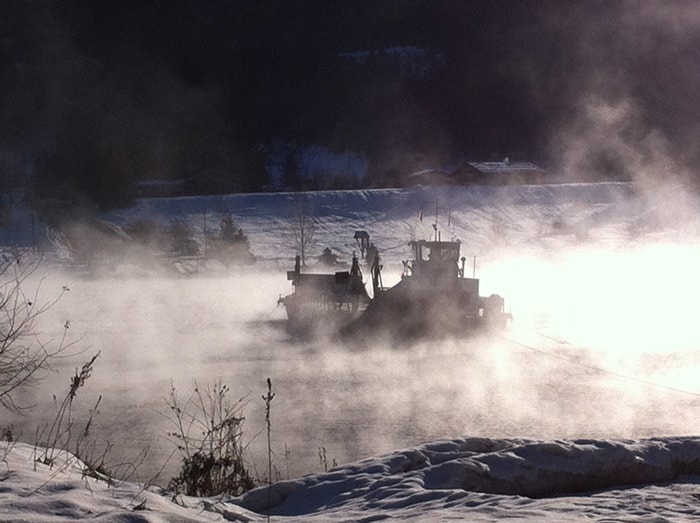After last year’s dry summer and water restrictions, there have been some concerns throughout the region about maintaining reservoir levels. But the Kootenay’s dry season is nothing compared to desert areas in countries like Nepal and Chile, where researchers have come up with an innovative way of supplying communities with water.
Fog harvesting is the process of collecting fog in a large, vertical polyethyleen mesh net. The fog is captured in the net and drips down to the bottom where it’s captured in a trough that connects to a pipe. The pipe can lead either to a storage tank or can flow downhill to a nearby village.
It takes 10 million microscopic droplets of fog to make one drop of water “the size of a match head,” but in the right areas, a large fog collector (LFC) can collect an average of 200 litres a day.
“Each fog collector — the panel on it is about 4m high by 10m long — on the average will collect 200 litres a day. So some days it might collect nothing, some days it might collect 500 litres,” said Dr. Robert Schemenauer, co-founder of FogQuest.
FogQuest is a charity based out of Kamloops that constructs LFCs in communities of developing countries with seasonal or year-round dry conditions.
Schemenauer has a PhD in cloud physics and a broad background in the atmospheric sciences. He first started working on fog collecting around 1985 when he was working for Environment Canada as a research scientist.
“I was asked to go to Chile by an agency in the Canadian government called the International Development Research Centre to see whether fog might be a reliable source of water for people living in the dessert of northern Chile, which is the driest place on earth,” he explains.
Schemenauer’s work in Chile turned into a multi-year project that resulted in the development of LFCs. After her retired from Environment Canada, he went on to co-found FoqQuest, which was registered as a charity in 2000.
So far, fog collecting has only been done for research purposes in Canada. Schemenauer says that fog harvesting is only recommended in places where there are no other options for accessing water.
“People are curious because they do have fog and they do have periods without rain, so people do investigations,” he says. “[But] in this country where we’re wealthy and we have access to water maybe with a little bit of effort, I don’t think it’s really going to be something that’s adapted.”
LFCs cost $1500 USD to construct, which isn’t bad considering the amount of water they produce, the low maintenance they require and their ten-year lifespan. But setting up the LFCs first requires taking the time to experiment with location and placement, which is done using 1m2 standard fog collectors. Ultimately it’s not worth the effort if there are other ready sources of water.
Schemenauer doesn’t recommend fog collecting for Castlegar, as we do have other options for accessing water. That being said, fog collection is already a natural part of our water cycle.
“Fog collected by the trees, whether it’s in the summer time when it’s liquid droplets hitting and dripping off, or whether it’s fog in the winter time, it’s again liquid droplets and they freeze forming rime ice, together that source of water from fog is probably around 20 per cent of all of the water that’s available in the area,” he says. This is known as occult precipitation.
One area in BC that may try fog harvesting is the Gulf Islands.
“Surprisingly some of those locations are extremely dry for many months of the year. They’re very rocky, so they don’t really have access to wells or ground water,” says Schemenauer.
But for Castlegar, occult precipitation is probably the closest we will get to fog harvesting.
